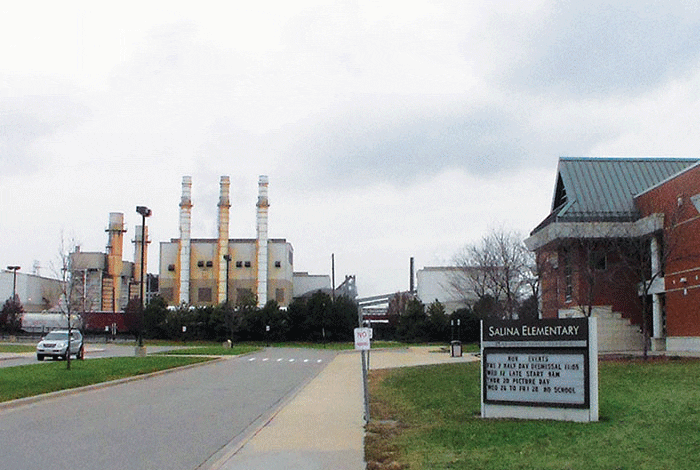
DEARBORN — Ninety-two schools are located in the area of Wayne County failing to meet federal standards for sulfur dioxide, according to a list forwarded to The Arab American News by the Sierra Club.
Two of the schools on the list include Salina Elementary and Salina Intermediate Schools. Both are located in Dearborn’s southend. The area is home to one of Michigan’s most polluted ZIP codes.
More than 20 Detroit schools are on the list. Other polluted communities with schools on the list include River Rouge, Riverview, Ecorse, Southgate, Grosse Ile, Lincoln Park, Melvindale, Brownstown Township, Rockwood, Trenton and Wyandotte.
The health of children who attend school in the non-attainment area is a major concern to environmental activists and parents.
Sulfur dioxide is harmful to human health. Short-term exposure to the toxic gas causes narrowing of airways and difficulty breathing, increased asthma symptoms and more frequent emergency room visits and hospitalizations.
In January, a conference took place at the University of Michigan, where experts and locals discussed the placement of Michigan K-12 schools near industrial polluters, especially in Detroit. The goal was to develop policies around the public health crisis.
The conference aimed to build on a 2011 study funded by the Kresge Foundation that linked air pollution around schools to poorer student health and academic performance.
The study, conducted by researchers from the University of Michigan, showed exposure to air pollution from industrial sources near public schools jeopardizes children’s health and academic success.
Researchers found that schools located in areas with the state’s highest industrial air pollution levels had the lowest attendance rates (an indicator of poor health), as well as the highest proportions of students who failed to meet state educational testing standards. Paul Mohai of the U of M School of Natural Resources and Environment and Byoung-Suk Kweon of the U of M Institute for Social Research led the research team.
The Sierra Club, a national environmental group with a chapter in Detroit, has been raising awareness on the dangers of sulfur dioxide emissions in Wayne County and trying to get companies to comply with federal and state environmental laws.
The main sources for sulfur dioxide emissions are DTE’s River Rouge and Trenton Channel plants and its EES Coke LLC subsidiary at U.S. Steel.
According to the Sierra Club Detroit Chapter, the Michigan Department of Environmental Quality’s draft permits for DTE’s River Rouge and Trenton Channel coal plants required relatively little reduction in the amounts of sulfur dioxide those plants have been emitting; and MDEQ’s own analysis acknowledges that the proposed limits would be inadequate to bring Wayne County into compliance with air quality standards.
“We are trying to get information out to the public and that includes Dr. Mohai’s study,” said Regina Strong, director of the Sierra Club Beyond Coal Campaign. “We are also trying to work with school districts. We also want to share the list of schools with people.”
Strong noted that schools like River Rouge High School are an even greater priority because they are located near main polluters.
River Rouge High School is very close to DTE’s River Rouge plant. In Dearborn, AK Steel’s facility (formally the Severstal plant) is located across the street from Salina Elementary and Salina Intermediate Schools.
The Severstal plant was listed as one of the main emitters of sulfur dioxide. In February, the Michigan Department of Environmental Quality told The Arab American News the air quality monitor at Salina Elementary School doesn’t test for Sulfur dioxide.
The Arab American News reached out to the River Rouge School District but did not receive a response.
A study conducted last year by Wayne State University researchers concluded Arab Americans’ pulmonary health is adversely affected by environmental factors. There is also a high degree of concern in the Arab community as to health effects from pollutants.
“The challenge is people are getting sick and suffering,” Strong said.






Leave a Reply